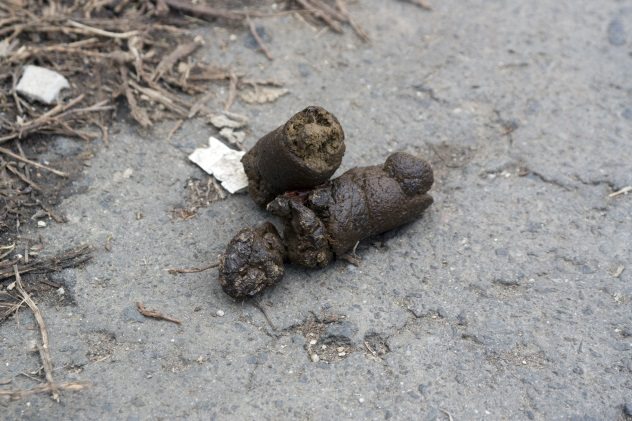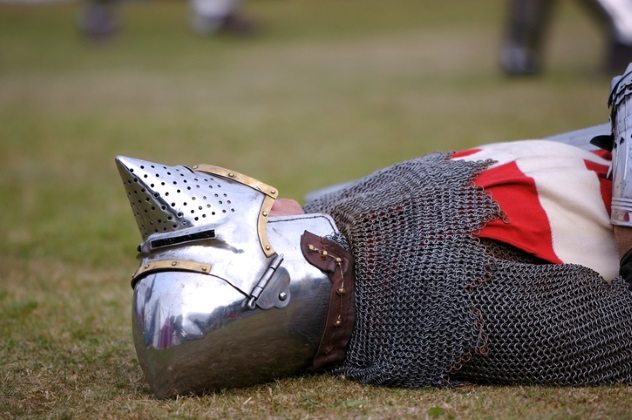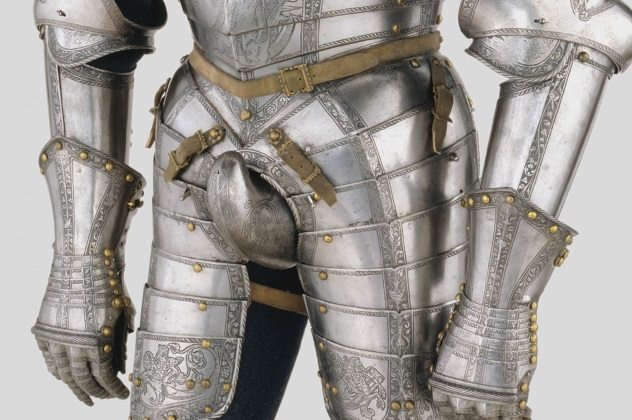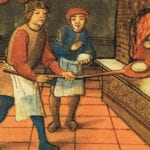 Technology
Technology  Technology
Technology  Humans
Humans 10 Everyday Human Behaviors That Are Actually Survival Instincts
 Animals
Animals 10 Animals That Humiliated and Harmed Historical Leaders
 History
History 10 Most Influential Protests in Modern History
 Creepy
Creepy 10 More Representations of Death from Myth, Legend, and Folktale
 Technology
Technology 10 Scientific Breakthroughs of 2025 That’ll Change Everything
 Our World
Our World 10 Ways Icelandic Culture Makes Other Countries Look Boring
 Misconceptions
Misconceptions 10 Common Misconceptions About the Victorian Era
 Mysteries
Mysteries 10 Strange Unexplained Mysteries of 2025
 Miscellaneous
Miscellaneous 10 of History’s Most Bell-Ringing Finishing Moves
 Technology
Technology Top 10 Everyday Tech Buzzwords That Hide a Darker Past
 Humans
Humans 10 Everyday Human Behaviors That Are Actually Survival Instincts
 Animals
Animals 10 Animals That Humiliated and Harmed Historical Leaders
Who's Behind Listverse?

Jamie Frater
Head Editor
Jamie founded Listverse due to an insatiable desire to share fascinating, obscure, and bizarre facts. He has been a guest speaker on numerous national radio and television stations and is a five time published author.
More About Us History
History 10 Most Influential Protests in Modern History
 Creepy
Creepy 10 More Representations of Death from Myth, Legend, and Folktale
 Technology
Technology 10 Scientific Breakthroughs of 2025 That’ll Change Everything
 Our World
Our World 10 Ways Icelandic Culture Makes Other Countries Look Boring
 Misconceptions
Misconceptions 10 Common Misconceptions About the Victorian Era
 Mysteries
Mysteries 10 Strange Unexplained Mysteries of 2025
 Miscellaneous
Miscellaneous 10 of History’s Most Bell-Ringing Finishing Moves
10 Truly Disgusting Facts About Life In Medieval England
If you ever find yourself trapped in history, you might want to bring a nose plug. Everyday life, before modern sewage and sanitation, could get pretty gross. We’ve covered some examples of this before.
It didn’t get much grosser than medieval England, though. In the days of Chaucer, to walk through the streets of London was to see and experience some of the most disgusting sights and smells you can imagine. Fantasy epics tend to gloss over the following aspects of medieval life for obvious reasons.
10 People Piled Garbage And Feces In Front Of Their Homes

When a British family had filled their chamber pots and stuffed their house with waste and rotting food, they were expected to clean it out. Officially, they were supposed to gather up their whole mess and carry it outside the city limits. It was one of those ideas that sounded great on paper—but in practice, nobody was about to waste their time doing that when there was a perfectly good street to dump things right outside their front door.
Trash piled up in front of people’s homes, ranging from old chicken bones to emptied-out chamber pots. Legend has it that people dumped their chamber pots out their windows so often that chivalrous men were expected to let women walk on the inside of the sidewalk so that any raining feces would fall on the man’s head instead.
Nobody even tried to stop people from dumping things on the streets until the 14th century, when King Edward II introduced England’s first law against dumping poop on the road. Even then, though, his expectations were pretty low. “All filth deposited before houses [must] be removed within a week,” the law ordered, and “pigs [must] be kept from wandering in the streets.”[1]
It didn’t have much of an effect. The trash kept piling up, and people just adjusted. Wealthy people would carry perfumed cloths against their nose whenever they stepped outside to keep from throwing up, and the king started hiring professionals to clear the filth off the road.
9 The Sewers Flooded When It Rained

As awful as the roads smelled on an average day, they were infinitely worse after it rained. The streets of medieval England were made of dirt and cobblestone, designed to slope into a rainwater ditch in the middle of the road to prevent flooding. This would’ve been a fine design if people would’ve just stopped jamming their trash everywhere they could.
The people of medieval England would cram everything they threw out into the rainwater ditches. They’d stuff these things so full that, by the time it rained, they were totally useless. Instead of stopping floods, the clogged ditches would overflow. Then they’d dislodge the months of trash that had built up inside them, drenching it and spilling it all over the streets.
When the sky cleared up, the roads would be covered in wet trash and feces slowly drying in the sun—and stinking up the entire town.[2]
8 Doctors Would Pee On Your Wounds

If a medieval soldier was wounded in battle, he didn’t have to worry. They had doctors on hand who were ready to sterilize the wound. They didn’t even need to pack anything to do it. As soon as someone got cut, a doctor—following the recommendations of the king’s personal surgeon—would whip out his tool and pee on your wound.[3]
They didn’t stop at cuts, either. Fresh urine was used to treat sores, burns, bites, and pretty well anything you could think of. It was gross, but it actually worked. The ammonia in the urine would help keep cuts from getting infected, and in life-or-death situations, the indignity was worth it.
It wasn’t just British doctors peeing on open wounds, either. One of the craziest stories comes from an Italian physician, Leonardo Fioravanti, who used his urine to save a soldier’s life after his nose was cut off in a fight. Fioravanti, thinking quickly, picked the man’s severed nose up off the ground, dusted off some sand, and peed on it.
The doctor, incredibly, was able to sew and reattach the urine-soaked nose back onto the man’s face. And for the rest of his life, the man could smell through that nose—whether he wanted to or not.
7 People Thought Bathing Made Them Sick

For most of the medieval era, the people were actually pretty good about bathing. They went to public baths regularly and did a fairly good job at cleaning themselves—for a while, anyway.
All that changed, though, after the Black Plague hit. In the chaos of seeing two-thirds of the world die from disease, the people of Europe started panicking. They wanted to find anything they could to blame this on, and they picked bathing.
The plague had spread, some doctors declared, because people were washing too often. They told people that water weakened their bodies and widened their pores, leaving them susceptible to plagues and diseases, and started ordering people to stop all forms of bathing immediately.[4] “By no means,” one doctor warned his patients, “should you wash your face.”
6 Male Fashion Showed Off The Bulge

Leaving something to the imagination fell out of fashion sometime around the 14th century. The men of England started getting into a new type of clothing—and it wasn’t much different from going out with nothing on at all.
The hot new look for the 1300s was a doublet called a courtpiece, a tiny little piece of cloth that only drooped down two inches below the belt.[5] From the waist down, they’d be wearing nothing but their undergarments, which, in those times, meant wearing the tightest, thinnest leggings physically possible, customized to make the bulge between your legs as visible as possible.
As time went on, the fashion just got weirder. Instead of merely showing off what God gave them, men started wearing codpieces with padded crotch areas, designed to make them look as big as possible.
Knights, by the 16th century, were even wearing them into battle. A suit of armor would come equipped with a massive, exaggerated metal codpiece that jammed out from between their legs. More often than not, they were even custom-designed to be pointing out. They didn’t serve any actual military purpose except, perhaps, to let the enemy know: You can knock me down, but I’ll still be erect.
5 Families Slept On Filthy Dirt Floors

Unless you were wealthy, most homes in medieval England didn’t actually have floors. Beneath most people’s feet was nothing more than compacted earth covered in rushes, herbs, and grass.
Covering the dirt with plants helped to keep the house warm, but it came with a pretty heavy cost. Food would fall into the rushes and get buried there, luring rats and insects into people’s homes. And people rarely cleaned them. Usually, they’d clear out the top layer and put on something new, but the bottom layer of rushes, where all the disgusting things were, would stay untouched, often for decades.
One Dutch visitor complained that English homes were “harboring expectoration, vomiting, the leakage of dogs and men, ale dropping, scraps of fish and other abominations not fit to be mentioned.”[6]
Those are pretty disgusting things to have under your feet—but it gets worse. They didn’t have beds, either, so they slept on the floor, which means that every night, their faces were right there, pressed against a 20-year-old layer of crusted vomit, droppings, and rotten food.
4 Doctors Spread Dung On Expecting Mothers

Childbirth has never been fun, but as terrible as it is today, it used to be a lot worse. In the medieval times, doctors didn’t really have a lot of ideas on how to keep an expecting mother from dying. Pretty well the only thing they knew how to do was to rely on divine intervention—so that’s exactly what they did.
Monks and midwives would sit by a pregnant woman and pray, calling on the child to come out “without dying, and without the death of your mother.” Or else they would rely on magic. Sometimes, they’d feed a woman vinegar and sugar and cover her in eagle’s dung, kind of just hoping that eagle poop might be something that keeps women alive.[7]
When magic failed, they just prayed for a miracle. An abbey in Yorkshire kept a holy, sacred girdle on hand at all times, convinced that it had magical powers that would keep a woman alive through a pregnancy. They weren’t the only ones who believed in it, either. When Henry III’s wife became pregnant, he ordered the monks to bring him the sacred girdle.
None of it seems to have worked particularly well. An estimated one in three children died before they turned five, and about 20 percent of all mothers died from the childbirth. To be fair, though, we don’t have any data on mothers who covered themselves with eagle dung and clutched onto the sacred girdle.
3 Aborted Fetuses Were Used As A Contraceptive

Before Planned Parenthood, there were other ways to get contraceptives. Women who needed contraceptives or an abortion could visit women who called themselves sorceresses—but these women didn’t exactly sell condoms and birth control pills.
The contraceptives these women sold were incredibly disturbing. They made magical amulets that were supposed to keep a woman from getting pregnant. Inside each one was a pair of weasel’s testicles, a child’s tooth, and a severed finger cut from an aborted fetus.[8]
They sold love potions, too, which were pretty much the same thing. Their love potions contained extracts of the purest essences of—you guessed it—aborted babies. Apparently, their customers would drink these.
It was all pretty messed up. Still, when it comes to the contraceptives, you’ve got to admit: Any woman wearing an amulet full of weasel testicles, baby teeth, and fetus parts probably isn’t going to be getting pregnant anytime soon.
2 Everyone Was Infested With Lice

It might not be too surprising, after all of this, to find out that the people of the Middle Ages had a little bit of a problem with lice. Pretty well everyone in medieval England struggled with lice and fleas, from the rich to the poor.
It was a regular part of some people’s days to gather around with their friends and family to pick lice off each other’s bodies. That was especially true for people who had to travel. Some crusaders left letters behind praising the laundry women who’d come with them, saying that not only would they wash their clothes, but they were as “good as apes for picking fleas.”[9]
The problem got worse the poorer you were, though, and it wasn’t restricted to England. When an English pilgrim named Margery Kempe traveled into a town of German peasants, she wrote home with disgust that the poor people of Germany would spend their evenings stripped naked, sitting in a circle and picking vermin off one another.
1 The River Thames Was Full Of Rotting Meat

Few places stank worse than the River Thames. During the Middle Ages, it was considered normal practice for butchers to gather up all their unused, rotten meat, bundle it up, drag it out to the bridge, and dump it in the river.
Dumping rotten animal parts into the river was so common that one bridge had earned itself the nickname “Butcher’s Bridge,” and it was the most disgusting place in the whole country. The bridge was famous for being covered in dried blood and pieces of animal entrails that had spilled out of the butchers’ carts.[10]
It took until 1369 before anyone made a law against it, but it didn’t do much good. Even after dumping meat into the Thames became a crime, people kept writing letters complaining about it. “No one, by reason of such corruption of filth” one local protested, “could hardly venture to abide his house there.”
It was pretty disgusting—but it didn’t really stop there. It took nearly 500 years before anyone managed to stop people from dumping every piece of waste they had into the River Thames. It took until the 19th century before anyone put an end to the River Thames’s stench. But for 500 years, London’s great river was one of the smelliest places on Earth.
Read more disgusting facts about various historical eras on 10 Truly Disgusting Facts About Life In Ancient China and 10 Truly Disgusting Facts About Ancient Greek Life.





![Top 10 Disgusting Foods The Chinese Eat [DISTURBING] Top 10 Disgusting Foods The Chinese Eat [DISTURBING]](https://listverse.com/wp-content/uploads/2020/03/23773182-0-image-a-46_1580303417295-150x150.jpg)


